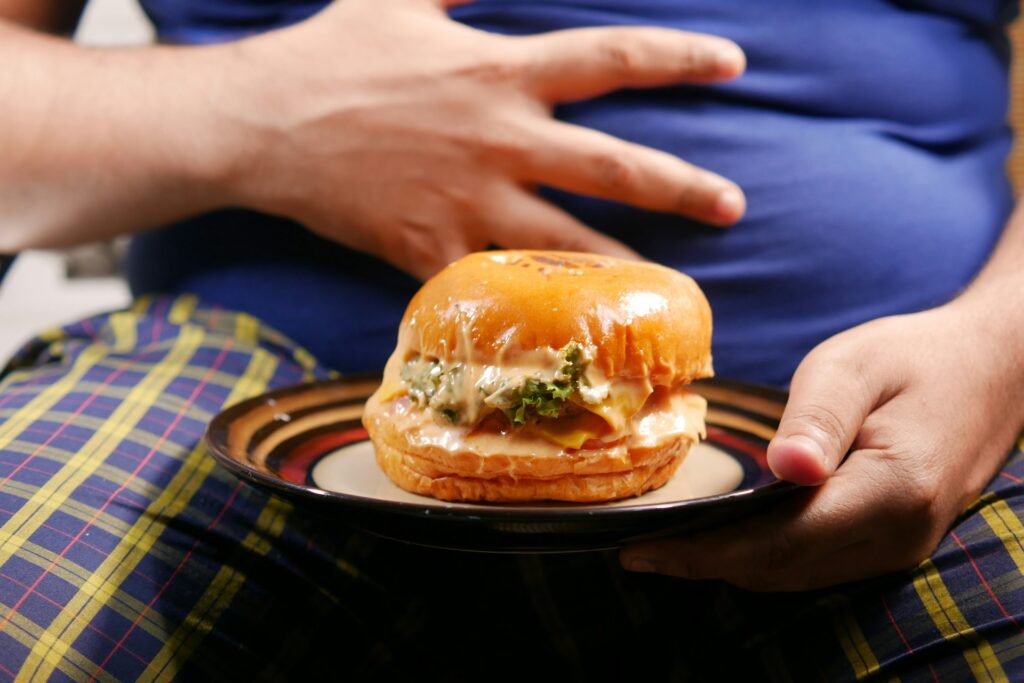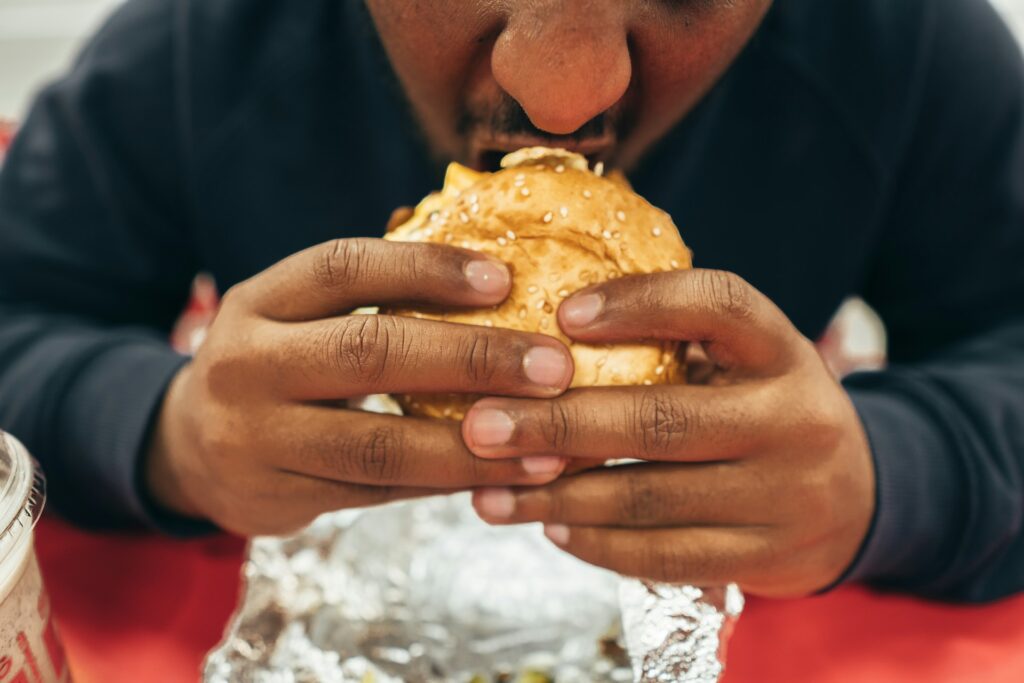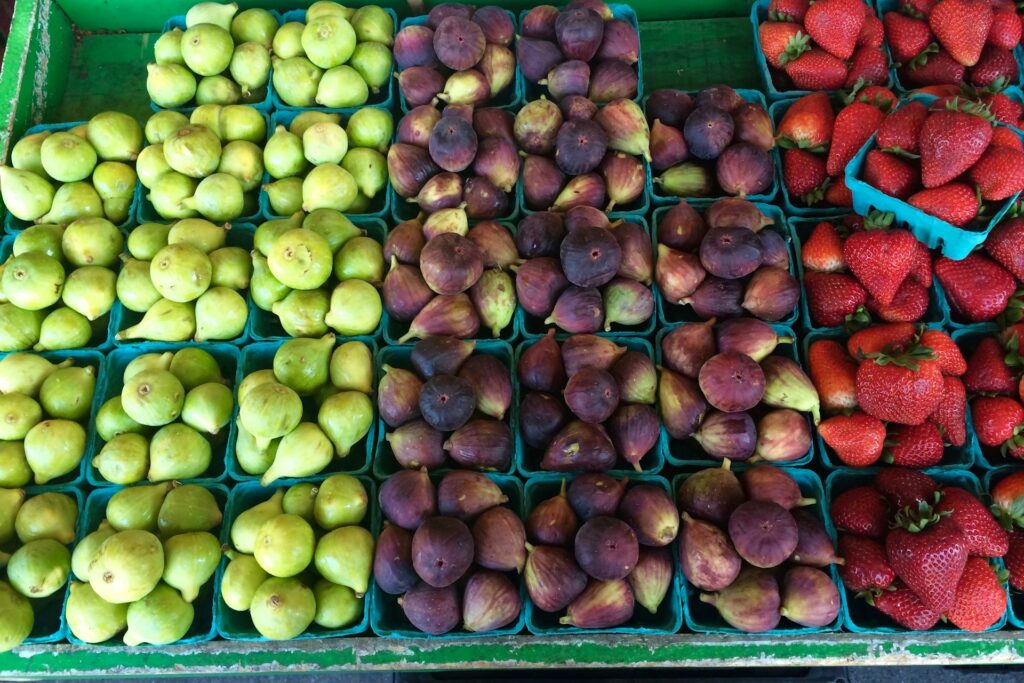How to Stop Mindless Eating and Take Control of Your Health
Eating has become such a routine part of our lives that many of us barely take time to truly experience and enjoy it.
Between busy schedules, emotional triggers, and the constant availability of snacks, we often find ourselves eating without paying attention to what or why we’re eating.
Mindless eating not only leads to unhealthy habits and digestion issues but can also create a disconnect between you and your body’s true needs.
It’s not just about what you’re eating—it’s about how you’re eating.
In this article, we’ll explore practical ways to stop mindless eating and replace it with mindful habits that empower you to truly enjoy your meals, understand your body, and nourish yourself with intention.
Ready to change the way you eat for good? Let’s dive in!
Disclaimer
The information shared on this blog is based on my personal experiences and research. It is not intended to be medical advice or to replace consultation with qualified healthcare professionals. Always consult a doctor or health practitioner before significantly changing your diet, lifestyle, or health regimen. What worked for me may not be suitable for everyone. Listen to your body and seek professional guidance for your unique needs.
When We Eat Mindlessly, We Miss Out on the Joy of Food!
Enjoyment cannot happen on autopilot.
Let’s face it: mindless eating can rob us of so much more than flavor.
When we rush through meals without paying attention, we’re not just missing out on the delicious experience of food—we’re also making things harder on our bodies.
Poorly chewed food can overwork your stomach and intestines, leading to discomfort like bloating, stomach pain, or even constipation.
And let’s talk about taste. Every bite is packed with flavors that can only be unlocked when you slow down and chew properly. Skipping this step means missing out on some of the best parts of your meal.
Here’s the deal: chewing does more than just break down food—it’s like hitting the start button on digestion.
Saliva not only helps digest your food but also prepares your stomach, kills harmful bacteria, and makes swallowing smoother.
Plus, chewing triggers signals in your brain that help you feel full, which can naturally curb overeating.
So next time you sit down for a meal, take it slow.
Enjoy the flavors, give your body a break, and turn mealtime into something more than just another task—it’s an experience worth savoring.
Why We Eat to Satisfy Emotional Needs
Sometimes, we don’t eat because our bodies need fuel. Instead, we eat mindlessly to fill an emotional void.
When stress, sadness, anxiety, or frustration creep in, food often becomes our go-to comfort.
The kitchen transforms into a safety haven—a place to calm our nerves and momentarily escape our feelings.
Comfort foods, packed with nostalgic or indulgent flavors, can release happy chemicals in the brain, offering a fleeting sense of relief and relaxation.

The Trouble with Emotional Eating
The thing is, mindless eating, that has been triggered by uncomfortable emotions rarely leaves us feeling satisfied.
That’s because food can’t address the underlying emotional needs we’re trying to fulfill.
Instead, emotional eating leaves us feeling worse. Guilt and shame can follow a binge, making us feel out of control and powerless over our cravings for sugar and fat.
The frustration of not managing those urges can amplify the very emotions that drove us to eat in the first place.
This creates a tough cycle—mindless emotional eating, guilt, and then turning to food again for comfort.
Stopping this mindless eating loop might feel overwhelming, but it’s entirely possible.
The first step is recognizing the patterns and finding healthier ways to nurture your emotional well-being.

Mindless Eating & Emotions: A Deep-Rooted Connection Since Childhood
From childhood, many of us learn to use food as a way to reward ourselves, seek comfort, or cope with stress—habits that contribute to mindless eating in adulthood.
These behaviors often stem from emotional associations with food that were formed early in life.
Think of cherished celebrations like birthday cakes, holiday feasts, or family barbecues. These moments teach us to associate food with happiness, love, and togetherness.
Parents and caregivers reinforce this connection by rewarding good behavior with treats, offering sweets to soothe tears, or showing affection through a favorite meal.
Over time, food becomes tied to emotions like security, joy, and love.
The Role of Emotional Eating
This deep-rooted connection between emotions and eating habits can lead to emotional eating, where food becomes a coping mechanism during times of stress, sadness, or boredom.
When faced with emotional challenges, our brains unconsciously associate eating with comfort and reward, making us more likely to reach for unhealthy snacks without considering true hunger signals.
Breaking this cycle is a key step toward overcoming mindless eating.
How to Break the Cycle of Mindless Eating
Rewiring these habits requires mindful eating techniques, self-awareness, and intentional effort. By consciously examining the emotional triggers behind your eating habits, you can begin to replace unconscious behaviors with healthier patterns.
Some strategies include:
- Pause and Reflect: Before eating, ask yourself if you’re truly hungry or seeking comfort.
- Mindful Substitutions: Find non-food ways to manage emotions, like journaling, walking, or meditation.
- Build a Balanced Relationship: Focus on eating for nourishment, not emotional fulfillment.
Developing a mindful approach to food not only helps combat mindless eating but also fosters a healthier, more balanced relationship with nourishment—one that supports long-term well-being.

Be Present in the Act of Eating
Becoming aware of the triggers behind mindless eating is the first step toward developing a healthier relationship with food.
Once you’ve identified why you eat mindlessly, the next step is to focus on the act of eating itself, practicing mindful eating techniques to strengthen your connection with your body’s true needs.
Engage All Your Senses While Eating
Experience your food fully by engaging all five senses. Savor the taste, texture, aroma, and even the colors of your meal.
This practice helps you stay grounded in the moment, allowing you to better recognize when your body feels satisfied.
By tuning into your senses, you shift your focus to the present, leaving behind distractions and patterns tied to emotional eating or past habits.
Eat Without Distractions
To truly practice mindful eating, eliminate distractions like smartphones, books, or music during meals. Sit down, take a deep breath, and give your food your full attention. Notice how eating slowly and deliberately allows you to feel more connected to your hunger and fullness cues. A mucus-free diet can help you with this.
- No Rush: While eating slowly can enhance mindfulness, it’s more important to eat attentively.
- Focus on the Moment: Pay attention to each bite, chew intentionally, and observe how your body responds as you eat.
Stay Present and Avoid Overeating
Mindful eating not only helps combat mindless snacking but also prevents overeating.
By fully immersing yourself in the act of eating, you can better distinguish physical hunger from emotional cravings.
Over time, this awareness helps you break the cycle of unconscious eating and develop habits that support long-term health.
By savoring your meals and honoring your body’s signals, you can transform your approach to food and foster a more balanced relationship with eating.
Mindful Eating Exercise: One Bite at a Time (by Jan Chozen Bays)
“One Bite at a Time” is a mindfulness practice developed by Jan Chozen Bays. This exercise has personally helped me eat more mindfully and savor my meals more fully.
It might benefit you too—give it a try!
- Take a bite of your food, then put your fork or spoon down.
- Focus your attention on your mouth. Pay full attention to the taste, texture, temperature, and sounds of chewing. Closing your eyes can deepen your awareness of the experience.
- As you swallow, notice how your tongue moves.
- Only take the next bite once your mouth is completely empty. Be patient with the process.
- Notice whether each bite feels different and how the flavors evolve as you continue eating.
Don’t worry if your mind starts to wander, and you reach for the fork without realizing it—just gently bring your attention back.
Stay mindful of the entire process.
At first, simply focus on being mindful during your first five bites. You can gradually extend this practice over time.
You can learn more about this approach in Jan Chozen Bays insightful video below:
Appreciate Your Food and the Present Moment
Before you begin eating, pause to express gratitude for the meal in front of you.
This simple act of practicing gratitude can anchor you in the present moment, fostering a deeper connection to your food and heightening your sensory experience.
Take a moment to reflect on the journey of your meal—the natural elements like rain and sunlight, the farmers who harvested the ingredients, and the effort that went into preparing it. By acknowledging these aspects, you can cultivate a sense of appreciation and mindful eating.
Focus on the Nourishment and Joy
As you eat, consciously appreciate the meal’s ability to nourish your body and provide energy.
When you’ve finished, take another moment to give thanks for the satisfaction and sustenance you’ve received.
This mindful approach can help reduce mindless eating, as you develop a deeper awareness of your food choices and eating habits.
Gratitude as a Tool for Mindful Eating
Practicing gratitude not only transforms how you relate to food but also positively impacts your overall mindset.
By focusing on the abundance and blessings in your life, you can shift your emotions away from stress or negativity and build a healthier, more intentional relationship with food.
Gratitude and mindful eating work hand-in-hand to combat emotional triggers and cultivate healthier eating habits, breaking the cycle of overeating and reinforcing a positive connection with nourishment.
Pay Attention to How You Feel After Eating
After you’ve finished eating, take a moment to tune into how your body feels.
Do you feel satisfied and content, or do you notice discomfort from overeating?
Observe whether the foods you've consumed make you feel good, or if certain items cause digestive issues, or leave you feeling sluggish or tired.
By focusing on your body’s signals, you can become more aware of what to adjust next time to improve how you feel after meals.
It can take time to detach from foods we enjoy but that don’t support our well-being.
Be patient with yourself. The process of recognizing which foods to avoid may require time and practice.
But with consistency, your efforts will lead to feeling better overall.

Make Mindful Awareness a Habit
Mindfulness is a habit, one that can be cultivated through consistent practice.
By incorporating mindful awareness into your daily routine, you can make it a natural part of your life.
Mindfulness doesn’t have to be limited to eating.
You can bring full presence to the process of preparing your meals.
In fact, you can apply this level of focus to everything you do throughout the day, giving your full attention to each moment and task.
How Often Are You Truly Present During Your Day?
How often do we actually take the time to fully immerse ourselves in the present moment, experiencing it with all five senses and being completely aware?
How often do we simply go through the motions? How often do we judge or analyze what we’re experiencing instead of just accepting it as it is?
Mindfulness reveals that our lives unfold in moments.
If we're not fully present in many of these moments, we risk missing out on the most meaningful parts of life and overlooking how much we shape our experiences through our perceptions and interpretations.
It’s Not Just Your Food That Deserves Your Full Attention
For instance, you can give your full focus to your morning shower, paying attention to how the water feels on your skin.
Make it a daily habit to notice the temperature and scent of your shampoo, as well as the sound of the water cascading down, helping you fully connect with the present moment.
Even when walking, direct your attention to the sensations of the moment. Feel each step and the ground beneath your feet. Take in the smells, sounds, and sights around you.
There’s always a chance to practice being fully aware of the present moment.
Make Mindful Eating a Habit
The most challenging part is simply remembering to practice it!
A little discipline is required, but don’t worry—that’s all it takes. Your initial efforts will pay off faster than you expect.
With regular practice, you’ll regain control over your eating habits and break free from those uncontrollable cravings.
When you focus fully on your food, you’ll experience far more enjoyment and satisfaction. Say goodbye to those moments of mindlessly eating and later feeling guilty or ashamed for overindulging in sweets or snacks.
By practicing mindful eating consistently—whether once a day or just once a week—you’ll create new neural pathways.
These new connections will make it easier to incorporate mindful eating into your daily routine, transforming it into a habit that gives you full control over your eating behaviors.
Use Post-its to Remind Yourself to Eat Mindfully
To help reinforce mindful eating, write a simple reminder on a Post-it note and stick it on your fridge. That way, you’ll see it every time you enter the kitchen.
You can also set a reminder on your smartphone to alert you at mealtime, encouraging you to focus on your food.
What’s great about mindful eating is that it’s a deeply rewarding practice. You can extend this mindfulness to other areas of your life as well.
By doing so, you’ll start to notice and appreciate aspects of your day that typically go unnoticed, bringing greater awareness and fulfillment to your routine.

Our Gut Bacteria Play a Key Role in Our Cravings
Mindful eating is a powerful tool for developing healthier eating habits, but breaking deeply ingrained patterns—especially those involving unhealthy foods—can be challenging.
Many people describe feeling almost addicted to junk food, and this isn’t just about willpower or habits.
A significant factor influencing cravings lies in your gut bacteria, which play a key role in your body’s signals for specific foods.
How Gut Flora Influences Food Choices
The gut, also known as the microbiota or gut flora, is home to trillions of bacteria that coexist with your body in a mutually beneficial relationship. These bacteria assist in digestion, immune function, and even mood regulation.
However, your diet directly impacts the balance of this ecosystem.
When you consume a diet high in processed foods, sugar, and unhealthy fats, it can upset the natural balance of gut bacteria.
This allows harmful or “bad” bacteria to thrive while reducing the diversity of beneficial bacteria.
These harmful bacteria rely on unhealthy food as their fuel source, and when deprived, they release signals that can drive your cravings for sweets, fast food, or highly processed snacks.
Sugar Cravings Linked to Imbalanced Gut Flora
Research indicates that an imbalanced gut microbiome can intensify sugar cravings.
In one study, mice with disrupted gut flora consumed significantly more sugar- and wheat-rich foods compared to those with a balanced microbiome.
But the findings go beyond mere consumption: the mice with disrupted gut flora were willing to work harder for their sugary treats. They had to press a button to access the food.
Mice with an imbalanced microbiome pressed the button over 50 times, while those with a healthy microbiome gave up after just a few attempts.
This study highlights how an imbalanced gut microbiome can influence behavior in a way similar to addiction.
It’s worth noting that gut flora imbalances can result not only from poor dietary habits but also from factors like sleep deprivation, stress, medication, and insufficient physical activity.

A Juice Cleanse Restores Your Gut’s Balance
Don’t worry—there’s an effective way to restore harmony to your gut flora: a juice cleanse detox.
Juice fasting is a powerful method for breaking free from persistent cravings for unhealthy foods.
Personally, juice fasting has helped me escape the endless cycle of mindless eating and constant hunger pangs. And it’s not just me—science recognizes the numerous health benefits of fasting as well.
By temporarily eliminating solid foods, a juice cleanse allows you to break free from old eating patterns, giving your body the chance to detoxify and reset your gut flora.
Eliminating Harmful Gut Bacteria
By refraining from feeding harmful gut bacteria, you effectively eliminate them. This, in turn, reduces your cravings for unhealthy foods that these bacteria thrive on.
Scientific studies support the idea that fasting positively influences the gut microbiome, promoting the growth of beneficial bacteria.
Moreover, the benefits of fasting extend beyond gut health. Research, such as a 2015 study, shows that fasting helps to alkalize the body, restoring balance to the acid-base system.
When the body becomes too acidic—often due to the accumulation of excess acids that aren’t properly expelled—it can lead to a range of health problems, including high blood pressure, stroke, heart attacks, cellulite, and premature aging.
Foods like animal proteins, baked goods, dairy, and processed items are especially acidic.
Sustainable Reduction of Cravings for Unhealthy Foods
The time spent fasting and cleansing will not only enhance your physical health but also offer a valuable opportunity to reflect on your relationship with food and establish healthier habits to finally stop mindless eating.
Mindful eating can be seamlessly integrated into a juice cleanse. By eliminating solid food, you heighten your awareness of your body’s signals, making it easier to distinguish between true hunger and mere cravings.
Rest assured, you won’t experience hunger during the cleanse. You are encouraged to drink as many juices as needed, which is essential because your body requires energy to detoxify!
The real benefit, however, is that you’ll gain clarity on whether you’re experiencing genuine hunger or if your cravings are being driven by the “bad” gut bacteria, which, deprived of their usual food, begin to protest (before being eliminated).
Combining a gut resetting juice cleanse with mindful eating offers the perfect opportunity to cultivate a healthier, more conscious relationship with food.
This holistic approach—addressing the mental, emotional, and physical aspects of eating—will empower you to build a deeper understanding of your body and its needs, setting the stage for long-term sustainable changes.
After the cleanse, it’s important to continue eating mindfully, choosing balanced, nutrient-dense foods while avoiding processed and sugary items. This will help maintain the balance of your gut microbiome and ensure that unhealthy cravings don't return.
Picture by Marcel Heil@Unsplash



